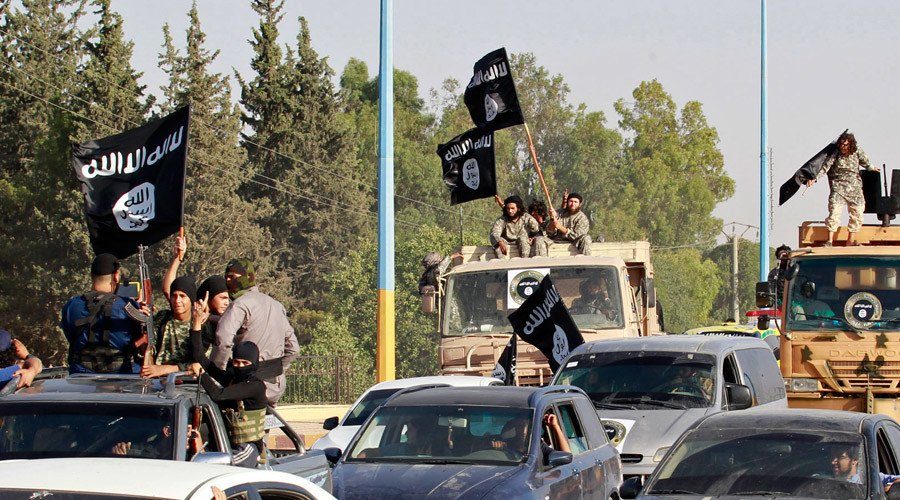
As the Islamic State group is cornered with numerous parts fighting it in many areas and losing its strongholds in Syria and Iraq, the question is being raised: Will ISIS be defeated or it will survive and become a different being entirely?
Originated as Jama’at al-Tawhid Wal-Jihad in 1999, which pledged allegiance to al-Qaeda and participated in the Iraqi insurgency following the March 2003 invasion of Iraq by Western forces.
In 2011, the group seemingly joined the rebellion against Bashar al-Assad in Syria and used this chaos to find a safe haven and easy access to weapons.
At the same time, it took advantage of the withdrawal of US troops from Iraq, as well as widespread Sunni anger at the sectarian policies of the country’s Shia-led government.
In 2013, the group began seizing control of territory in Syria and changed its name to Islamic State in Iraq and the Levant (Isis or Isil).
The group first proclaimed itself a worldwide caliphate and began referring to itself as Islamic State or ISIS in June 2014. As a caliphate, it claims religious, political and military authority over all Muslims worldwide.
Between 27,000 and 31,000 people have traveled to Syria and Iraq to join the Islamic State and other groups in the region.
An advance into areas controlled by Iraq’s Kurdish minority and the threats the group was sending to the world, prompted a US-led multinational coalition to launch air strikes on ISIS positions in Iraq in August 2014.
The US-led coalition has conducted more than 10,000 air strikes against ISIS targets in Iraq since August 2014.
In Syria, the US-led air campaign began in September 2014. Since then, almost 5,500 strikes have been carried out by coalition forces.
One of the first major victories in the battle against ISIS was the recapture of the northern Syrian town of Kobane by Kurdish fighters in early 2015. The battle left more than 1,600 people dead and Kobane in ruins. But since then, Kurdish-led forces have driven ISIS militants out of thousands of square kilometers of northern Syria.
Ramadi in western Iraq also suffered widespread destruction during a months-long offensive by Iraqi troops and pro-government militia that saw ISIS militants ousted from the city in January 2016, eight months after they overran it.
Palmyra in middle Syria was always retrieved by Assad regime forces backed by Russian air and ground forces.
After ISIS conducted terror attacks in Turkey, the Turkish government declared the start of direct Turkish operations inside Syria against ISIS after the previous attacks were only by shells.
Turkey’s operations against ISIS started on August 24 alongside allied Syrian rebels.
Syrian rebels were able to retrieve Jarablus town from ISIS and opened a new front to the west of al-Rai village, putting more pressure on ISIS militants from the both sides and securing the Syrian-Turkish border from the militants’ presence.
Syrian rebels retrieve Dabiq town also from ISIS, paving the way to attack al-Bab city near Aleppo.
The rebels have since extended those gains and now control an area of roughly 1,270 square km (490 square miles) in northern Syria.
The US-led coalition also started a military operation to retrieve Mosul city from ISIS, with the Iraqi government and allied Shiite militias.
The US-backed Syrian Democratic Forces (SDF), a group comprising mainly of Kurdish armed groups fighting in Syria, said at a press conference earlier on November that the offensive to reclaim the de facto capital of Islamic State (ISIS) had begun.
Entering a new phase
The lessons from previous incarnations in Iraq and Syria show that the group may be able to adapt to a lack of territory through becoming a more virtual organization.
After the major losses, the foreign fighters in ISIS are expected to return to their home countries to establish new networks for the group there, recruit new members and transfer the group’s old ways into completely new ones, increasing its risk.
Almost 4,300 foreign fighters from the EU joined Islamic State in Syria and Iraq and about 30 percent of them already returned to their home countries.
Many ISIS-linked terror attacks were conducted in Europe in the past two years, and the most deadly ones were made by Europe’s own citizens’ hands.
However, even if ISIS was defeated on the ground, the area won’t be calm again soon.
Defeating ISIS will in theory trigger the start of a long process of political reconciliation in Iraq, while the Syrian civil war will remain active without the convenient enemy that everybody was against, according to James Denselow.
Will “Operation: Inherent Resolve” find another terrorist listed group to go after in Syria, will the various actors consolidate behind Prime Minister Abadi’s fragile government in Iraq, or will it disband after US leadership takes a different tack under a Trump administration?
The aversion to ground troops from the US or Europe being in the Middle East has led us to a situation where air power and Special Forces are ramped up or scaled down depending on the nature of the challenge at hand.
Critically however, a wider strategic approach to understanding why the threats of terrorism have metastasised in this part of the world, seems to be completely absent.
ISIS is not an alien actor but rather a product of this history and politics of the region and beyond. In many respects it has been a convenient enemy for states to rally around. But once it has gone, the challenge of what replaces it – and how to chart a post-ISIS Middle East – remain very real problems indeed.



